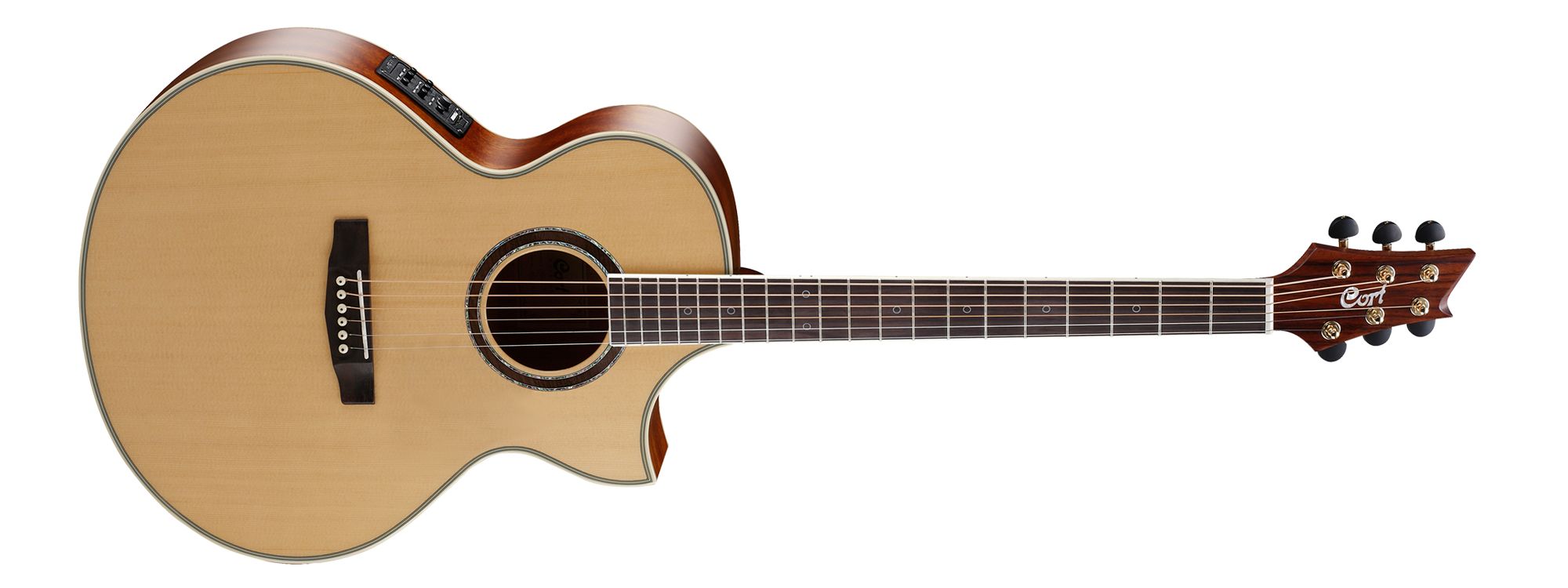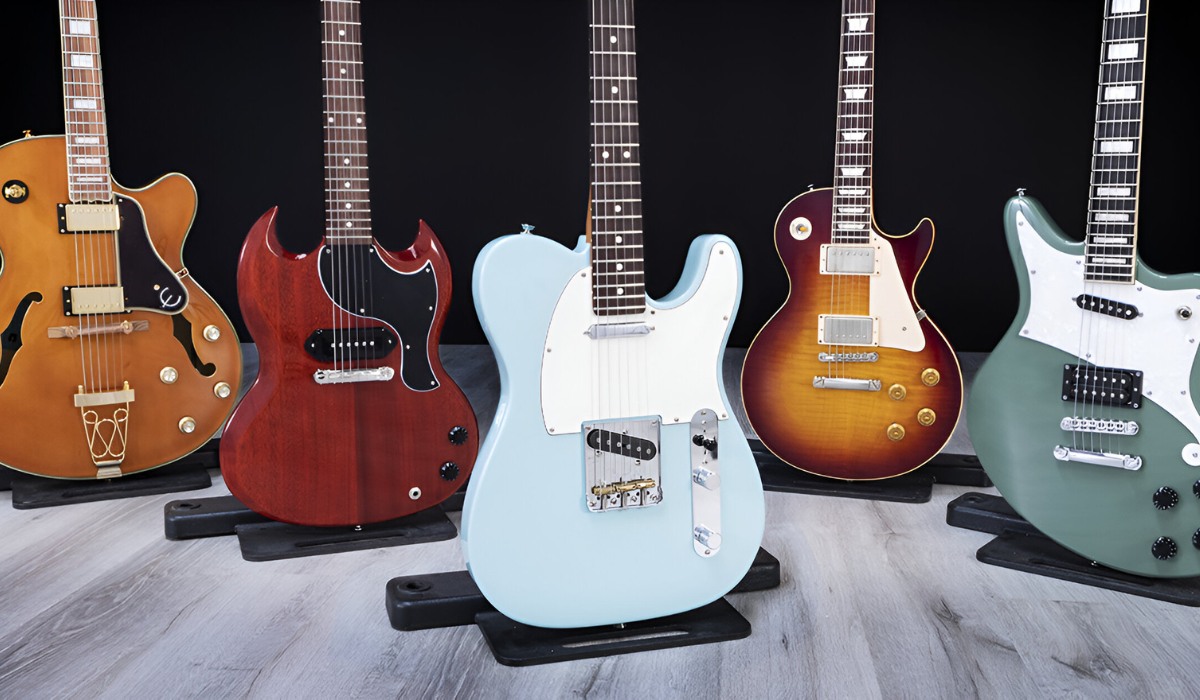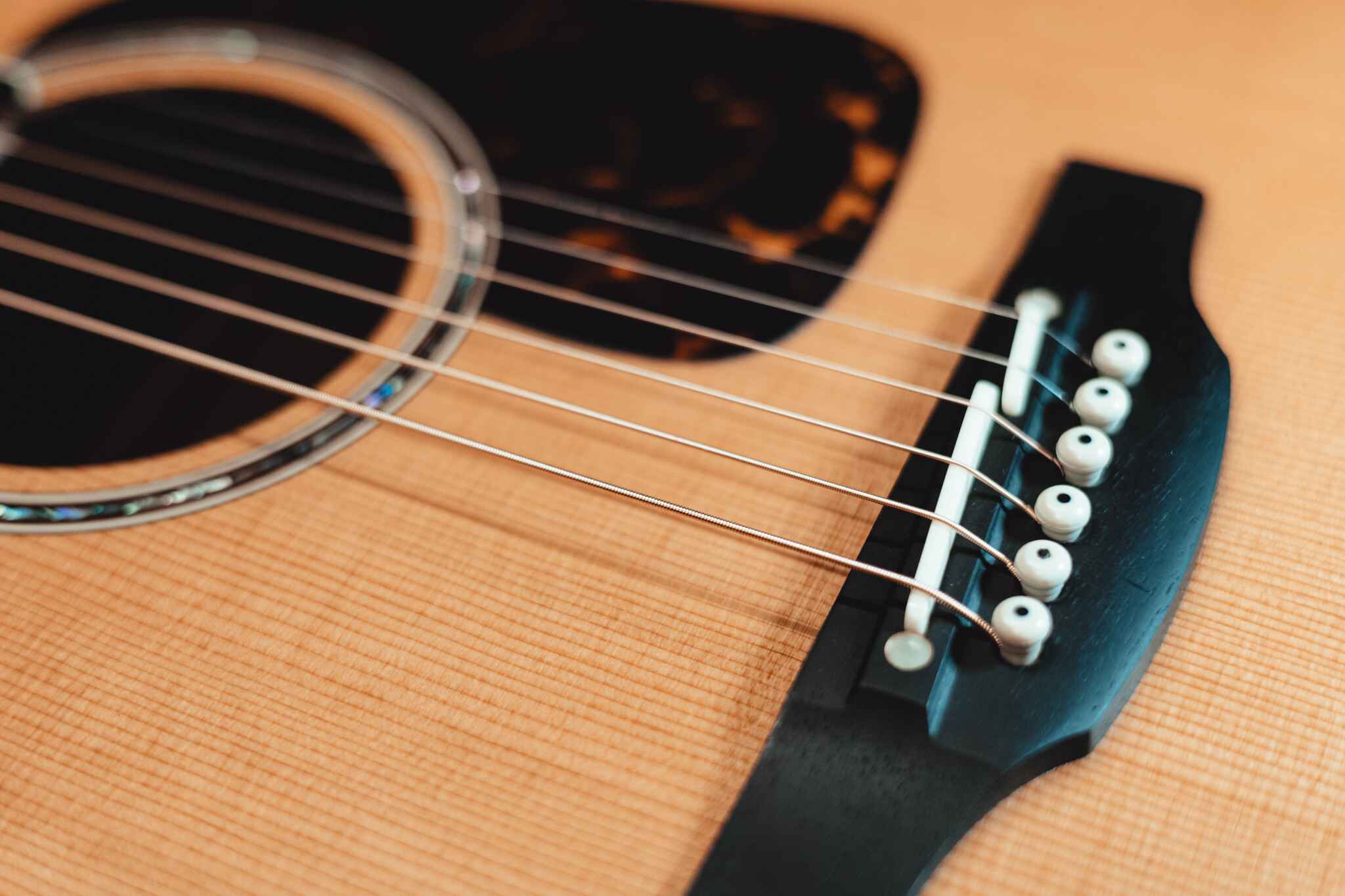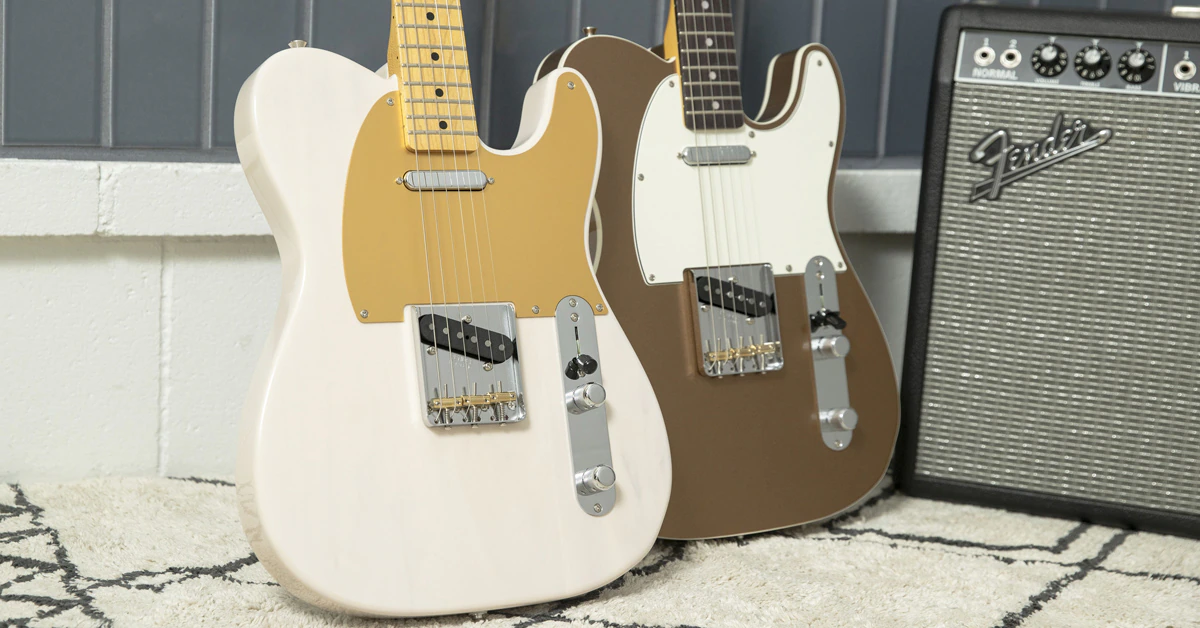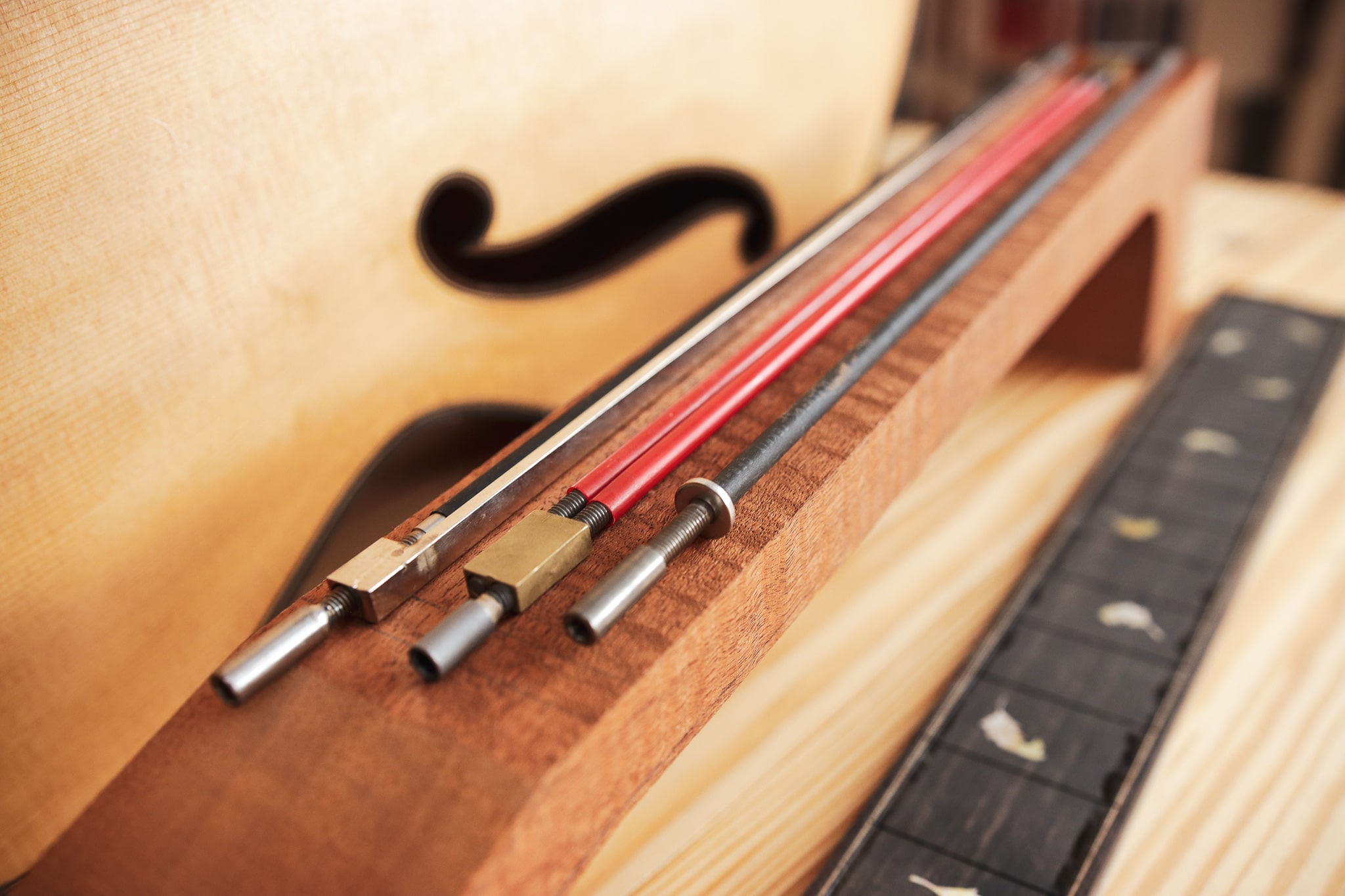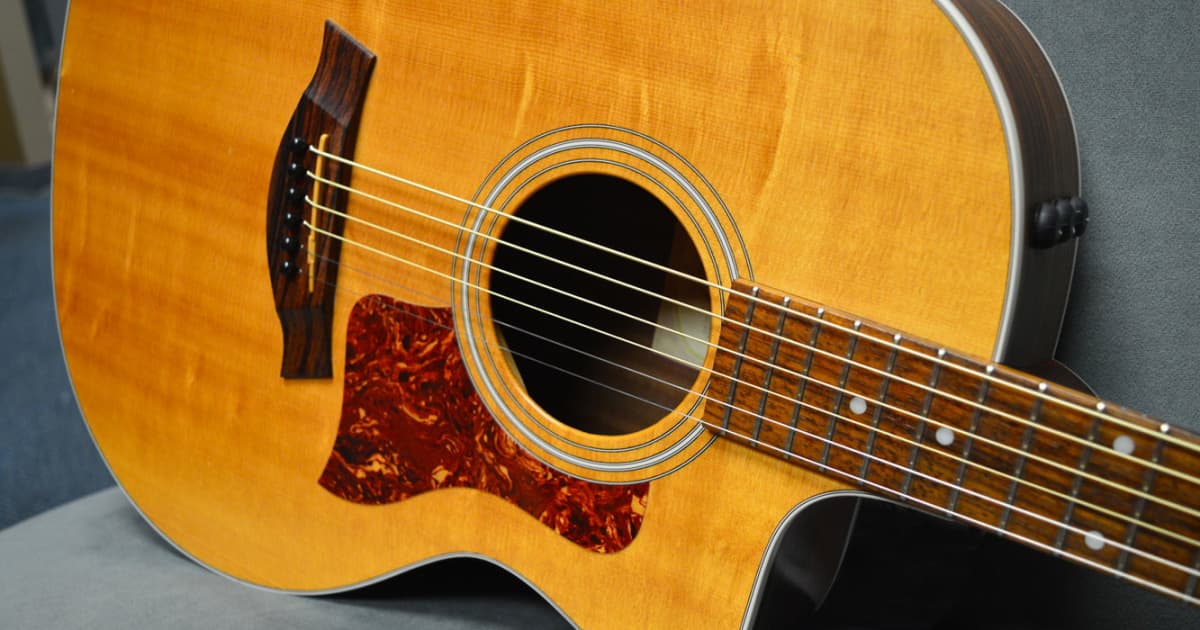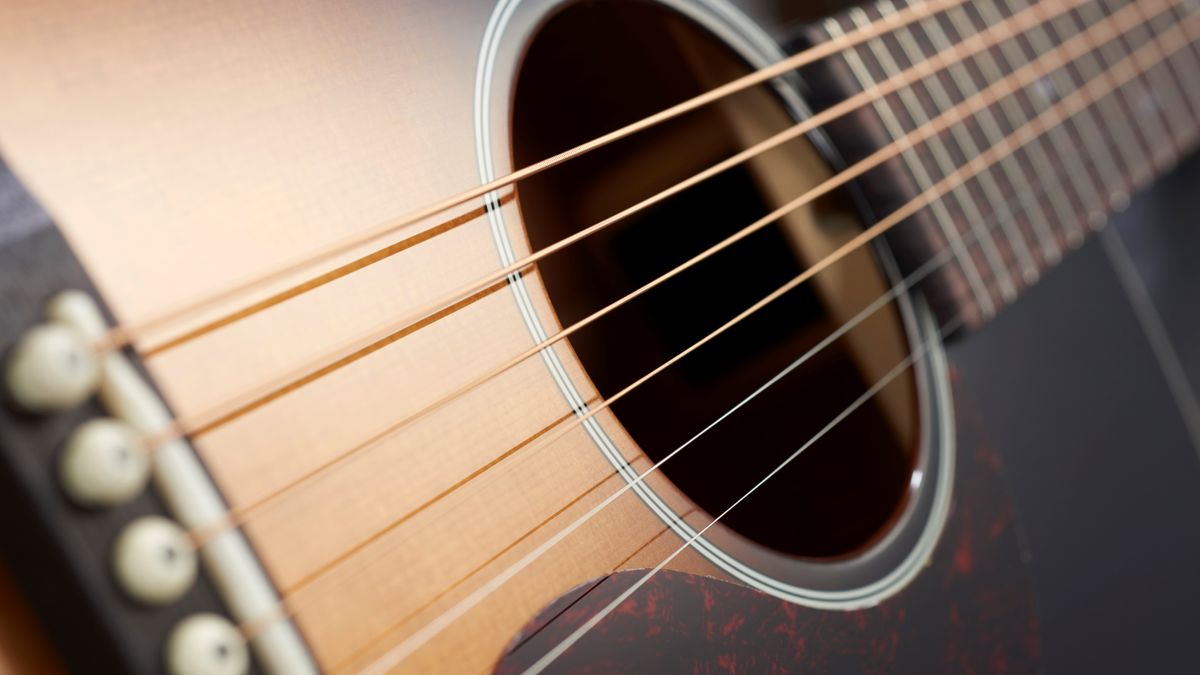Introduction
Welcome to the world of acoustic guitars! Whether you are a seasoned guitarist or just starting to explore the beauty of playing music, you might have come across the term “baritone acoustic guitar.” But what exactly is it and what is its purpose? In this article, we will unravel the mystery behind the baritone acoustic guitar and explore its unique features, advantages, and ideal uses.
The baritone acoustic guitar is a variation of the traditional acoustic guitar that is known for its deep and rich tones. It is larger than regular acoustic guitars and is specifically designed to provide a lower range of notes. While the name may sound unfamiliar to some, the baritone acoustic guitar has gained popularity among musicians for its versatility and distinctive sound.
Baritone acoustic guitars offer a unique sound that falls between the range of a regular acoustic guitar and a bass guitar. The strings on a baritone guitar are typically thicker and have a longer scale length, allowing for lower tunings. This characteristic gives the instrument a distinct tonal quality and makes it perfect for certain genres or playing styles that require a deeper and more resonant sound.
So, why would someone choose to play a baritone acoustic guitar instead of a regular acoustic guitar? The answer lies in the versatility and flexibility it offers. The baritone guitar can fill a musical space between the traditional acoustic guitar and the bass guitar, creating a rich and full-bodied sound that adds depth to any arrangement.
Additionally, the baritone guitar expands the range of chord voicings and allows for unique harmonic possibilities. Its lower tuning and extended range provide an opportunity for guitarists to explore new melodic ideas and experiment with different musical genres. Whether you are into blues, jazz, folk, or even heavy metal, the baritone acoustic guitar can add a new dimension to your playing.
In the following sections, we will dive deeper into the specific features, advantages, and techniques associated with playing the baritone acoustic guitar. So, grab your instrument, get ready to tune those lower strings, and let’s explore the captivating world of the baritone acoustic guitar!
Definition of a Baritone Acoustic Guitar
A baritone acoustic guitar is a variation of the traditional acoustic guitar, specifically designed to produce deeper and lower tones. It is larger in size compared to regular acoustic guitars and features unique characteristics that set it apart. The term “baritone” refers to the lower range of notes that this type of guitar can produce.
One of the defining features of a baritone acoustic guitar is its longer scale length. This scale length refers to the distance between the nut and the saddle—the two points where the strings are anchored. The longer scale length allows for greater string tension, facilitating the lower, bass-like tones that the baritone guitar is known for.
In terms of construction, baritone acoustic guitars often have larger bodies than regular acoustic guitars to accommodate the longer scale length and produce a fuller sound. This additional body size enhances the resonance and volume of the instrument, resulting in a rich and impactful tone.
Another key aspect of a baritone acoustic guitar is the tuning. Unlike standard acoustic guitars that are typically tuned in EADGBE, baritone guitars employ alternative tunings that feature lower pitches. The most common tuning for a baritone acoustic guitar is B-E-A-D-F#-B, which is five steps lower than standard guitar tuning. This lower tuning provides the instrument with its characteristic deep and resonant sound.
It’s important to note that while a baritone acoustic guitar is similar to a regular acoustic guitar, it is not to be confused with a bass guitar. While bass guitars feature even longer scale lengths and are specifically designed for playing basslines, a baritone guitar is meant to offer the lower tones and expanded range without exclusively focusing on bass frequencies.
With its unique construction, distinct tuning, and lower pitch capabilities, the baritone acoustic guitar stands as a distinct instrument within the world of guitars. Its rich, deep sound adds a new dimension to musical arrangements and allows for creative exploration in various genres and playing styles.
Difference Between Baritone and Regular Acoustic Guitars
While the baritone acoustic guitar shares similarities with a regular acoustic guitar, there are several key differences that set them apart. Understanding these differences can help you better appreciate the unique qualities and purposes of each instrument.
Size and Scale Length: One of the most noticeable distinctions between a baritone and regular acoustic guitar is their size and scale length. Baritone guitars are generally larger, featuring a longer scale length to accommodate the lower tunings. Regular acoustic guitars, on the other hand, have a shorter scale length and are more compact in size.
Tuning: Another significant difference lies in the tuning used for both types of guitars. Regular acoustic guitars are typically tuned to standard EADGBE tuning. In contrast, baritone guitars are tuned lower, often with a B-E-A-D-F#-B tuning, which adds depth and richness to the tone.
Range and Tone: Due to the larger body size, longer scale length, and lower tuning, baritone acoustic guitars offer a wider range of notes compared to regular acoustic guitars. The baritone guitar is capable of producing deeper, bass-like tones, while regular acoustic guitars generally have a brighter and more treble-focused sound.
Purpose and Playing Style: The purpose and playing style associated with each guitar also differ. Regular acoustic guitars are versatile and commonly used in various musical genres, such as folk, rock, and pop. They are well-suited for strumming chords and playing melodies. On the other hand, baritone acoustic guitars are often employed in genres that require a deeper and more resonant sound, such as jazz, blues, and certain styles of fingerpicking. They excel in providing a fuller tonal foundation to complement other instruments in an ensemble.
String Gauge: The baritone acoustic guitar typically requires thicker strings due to the lower tuning and longer scale length. This results in a different feel and tension when playing compared to regular acoustic guitars. The thicker strings contribute to the instrument’s distinctive sound and facilitate the production of rich, booming tones.
It’s important to note that while these differences exist, there is no strict rule regarding which guitar to choose. It ultimately depends on personal preference, playing style, and genre of music. Regular acoustic guitars offer versatility, while baritone guitars provide a unique sonic palette for those seeking deeper and more resonant tones.
By recognizing the disparities between baritone and regular acoustic guitars, you can make an informed decision when selecting the instrument that best suits your musical needs and preferences.
Unique Features of a Baritone Acoustic Guitar
The baritone acoustic guitar boasts several distinctive features that contribute to its unique sound and character. Understanding these features can help guitarists appreciate and leverage the capabilities of this remarkable instrument.
Extended Scale Length: One of the defining features of a baritone acoustic guitar is its extended scale length. Typically longer than a regular acoustic guitar, this longer scale length allows for greater string tension and accommodates lower tunings. The increased scale length contributes to the rich, resonant tones and improved sustain that define the baritone guitar’s sound.
Deep and Resonant Tones: Due to the longer scale length and lower tuning, the baritone acoustic guitar produces deep, bass-like tones. This deep tonal quality adds a lush and distinctive timbre to the instrument’s sound. The resonance and warmth of the tones make the baritone guitar an excellent choice for genres like jazz, blues, and certain folk styles.
Expanded Range: The lower tuning and longer scale length of the baritone acoustic guitar extend its range beyond that of a regular acoustic guitar. This expanded range allows for unique chord voicings, melodic possibilities, and creative exploration. It opens up doors to sonic territories that might not be easily attainable on a standard acoustic guitar.
Thicker Strings: To accommodate the lower tunings, baritone acoustic guitars require thicker strings. The thicker gauge strings contribute to the instrument’s distinctive sound and feel. They offer a satisfying tension and response while producing deep, full-bodied tones. The thickness of the strings also allows for effective articulation and expression when playing.
Enhanced Resonance and Projection: The larger body size of the baritone acoustic guitar enhances its resonance and projection. The increased amount of air volume inside the guitar’s body contributes to a richer and more powerful sound. This improved resonance and projection make the instrument ideal for solo performances or when playing in an ensemble, especially in situations where a fuller tonal foundation is desired.
Versatility in Genres and Playing Styles: While the baritone acoustic guitar is often associated with jazz, blues, and certain folk styles, it is also a versatile instrument that can be utilized in various musical genres. Its unique tonal characteristics lend themselves well to experimentation and exploration, making it suitable for a wide range of playing styles and creative expressions.
By embracing the unique features of the baritone acoustic guitar, guitarists can fully capitalize on the instrument’s sonic potential. Its ability to produce deep, resonant tones and extended range offers new possibilities for musical expression and creative exploration.
Lowered Tuning and Extended Range
One of the defining characteristics of the baritone acoustic guitar is its lowered tuning and extended range. This unique feature sets it apart from regular acoustic guitars and opens up new possibilities for guitarists seeking a deeper and more resonant sound.
Lowered tuning refers to the practice of tuning the strings of the baritone acoustic guitar to pitches that are lower than the standard tuning of a regular acoustic guitar. While regular acoustic guitars are typically tuned to EADGBE, baritone guitars are often tuned to B-E-A-D-F#-B or other similar lower tunings. This lowered tuning allows for a rich and full-bodied sound with a deeper tonal range.
The extended range of the baritone acoustic guitar is a result of its lowered tuning and longer scale length. With the thicker strings and lower pitches, the instrument can produce lower notes and reach frequencies that are not easily achievable on standard acoustic guitars. This expanded range opens up new possibilities for exploring different chord voicings, melodic ideas, and musical arrangements.
Lowered tuning and extended range provide guitarists with the ability to create unique and captivating sounds. By experimenting with different tunings and exploring the full potential of the instrument’s extended range, musicians can add depth and richness to their compositions and performances.
In addition to the extended range, the lowered tuning of the baritone acoustic guitar offers advantages in certain musical genres. It is particularly well-suited for styles that require a deeper and more resonant sound, such as jazz, blues, and certain types of folk and fingerstyle playing. The lower frequencies created by the instrument can add a layer of complexity and emotion to musical arrangements.
While the lowered tuning and extended range of the baritone acoustic guitar offer numerous benefits, they also present unique challenges. The thicker strings and lower tension require adjustments in playing technique and finger strength. It may take some time for guitarists to adapt to the different feel of the instrument and develop a comfortable playing style that fully utilizes the extended range.
Overall, the lowered tuning and extended range of the baritone acoustic guitar provide guitarists with a distinctive sound and expanded musical possibilities. Whether you are seeking to delve into different genres or simply want to explore new creative territories, the lowered tuning and extended range of the baritone acoustic guitar offer a universe of sonic opportunities.
Ideal Uses for a Baritone Acoustic Guitar
The baritone acoustic guitar has distinct tonal characteristics that make it well-suited for certain musical scenarios and genres. Understanding the ideal uses for a baritone guitar can help guitarists make informed decisions about when and how to incorporate this unique instrument into their playing.
One ideal use for a baritone acoustic guitar is in jazz music. Jazz often requires rich and resonant tones, and the lower tuning of the baritone guitar provides the perfect foundation for playing bluesy melodies, comping chords, and adding depth to jazz arrangements. The extended range of the baritone guitar allows for further exploration of complex jazz harmony and chord voicings.
Blues music also benefits greatly from the use of a baritone acoustic guitar. The deep, throaty tones produced by the instrument perfectly complement the soulful and expressive nature of the blues. Whether playing slide guitar, fingerpicking intricate blues progressions, or unleashing powerful, gritty riffs, the baritone guitar adds a dimension of richness and authenticity to the blues genre.
Another ideal use for the baritone acoustic guitar is in certain folk styles. The lower tuning and extended range help create a warm and earthy atmosphere that suits traditional folk songs and ballads. Whether strumming chords or fingerpicking intricate melodies, the baritone acoustic guitar can evoke a sense of nostalgia and add a unique depth to folk arrangements.
In addition to jazz, blues, and folk, the baritone acoustic guitar finds a home in many other genres. It can be used to create a distinct rhythmic foundation in country music, add depth to acoustic rock arrangements, or even provide the backbone for experimental and ambient music. Its versatility makes it a valuable tool in the hands of creative musicians looking to explore new possibilities.
Furthermore, the baritone acoustic guitar shines in solo performances or as part of an ensemble. Its deep, resonant tone fills the sonic space and adds richness to musical compositions. Whether playing in a small intimate setting or on a grand stage, the baritone acoustic guitar captures the attention of listeners and creates a captivating musical experience.
Ultimately, the ideal uses for a baritone acoustic guitar are determined by the musician’s imagination, creativity, and musical preferences. Its ability to produce deep and resonant tones, combined with its expanded range, make it an excellent choice for musicians seeking a unique and impactful sound. Whether in jazz, blues, folk, or beyond, the baritone acoustic guitar offers a wealth of possibilities for expressive playing and musical exploration.
Advantages and Disadvantages of Using a Baritone Acoustic Guitar
Using a baritone acoustic guitar offers a range of advantages and disadvantages that musicians should consider when deciding whether to incorporate this unique instrument into their playing. Understanding these pros and cons can help guitarists make an informed decision about whether a baritone guitar is the right choice for them.
Advantages:
1. Unique Tonal Character: The baritone acoustic guitar’s deep and resonant tones provide a unique tonal character that can enhance musical arrangements and compositions. Its rich and full-bodied sound creates a distinct sonic presence.
2. Expanded Range: The lower tuning and longer scale length of the baritone guitar result in an extended range of notes. This expanded range allows for innovative chord voicings, melodic exploration, and creativity in composition.
3. Versatility: While often associated with certain genres like jazz, blues, and folk, the baritone acoustic guitar is versatile and can be used in a wide range of musical styles. It adds depth and complexity to various genres, from rock to country to ambient music.
4. Unique Playing Experience: Playing a baritone acoustic guitar offers a different playing experience compared to regular acoustic guitars. The thicker strings, lower tuning, and longer scale length contribute to a distinct feel, providing a fresh and inspiring playing experience.
Disadvantages:
1. Learning Curve: Transitioning to a baritone acoustic guitar can have a learning curve, especially for guitarists accustomed to playing regular acoustic guitars. The thicker strings and altered scale length may require adjustments in technique and finger strength.
2. Limited Availability: Baritone acoustic guitars are not as widely available as regular acoustic guitars. Finding a high-quality baritone guitar that meets your preferences and specifications may require some research and effort.
3. String Tension: The thicker strings needed for the lower tuning of the baritone guitar result in higher string tension. Some guitarists may find this higher tension more physically demanding to play, requiring additional finger strength and dexterity.
4. Less Common Tuning: The baritone guitar’s non-standard tuning may require relearning or adjusting songs and chord shapes. This can be a disadvantage if you are accustomed to playing in standard tuning and need to quickly switch between different guitars.
It’s important to evaluate these advantages and disadvantages in the context of your playing style, musical goals, and personal preferences. While the baritone acoustic guitar offers a unique and captivating sound, it may not be suitable for every guitarist or every musical situation. Understanding these factors can help you determine whether the benefits outweigh the challenges, and ultimately decide if a baritone guitar is the right choice for you.
Common Techniques and Playing Styles for Baritone Acoustic Guitars
The baritone acoustic guitar opens up a world of creative possibilities, allowing guitarists to explore unique techniques and playing styles. Whether you’re a seasoned musician or just starting out, here are some common techniques and playing styles associated with the baritone acoustic guitar.
1. Fingerpicking: Fingerpicking on the baritone acoustic guitar can create a rich and resonant sound. This technique involves using the thumb, index, middle, and ring fingers to pluck the strings individually, allowing for intricate melodies, chord progressions, and basslines to be played simultaneously.
2. Strumming: Strumming on the baritone guitar produces a deep and full sound, making it ideal for creating a rhythmic foundation in various musical styles. By using a combination of downstrokes and upstrokes across the strings, guitarists can create dynamic and expressive strumming patterns.
3. Slide Guitar: The baritone acoustic guitar lends itself well to slide guitar playing. By sliding a glass or metal tube, known as a slide, along the strings, guitarists can produce soulful and expressive melodies. The lower tuning of the baritone guitar enhances the slide guitar’s deep and resonant sound, perfect for blues and folk styles.
4. Bass Accompaniment: The baritone acoustic guitar can be used to provide a bass-like accompaniment in a musical ensemble. By playing lower-pitched notes, either arpeggiating chords or playing single-note lines, the baritone guitar adds richness and depth to the overall sound.
5. Open Tunings: Experimenting with open tunings on the baritone guitar can unlock a wealth of new musical possibilities. By tuning the strings in a way that creates a chord when played open, guitarists can explore rich and resonant harmonic textures, facilitating unique chord voicings and melodic patterns.
6. Melodic Exploration: The extended range of the baritone acoustic guitar encourages melodic exploration. Guitarists can delve into higher registers while still maintaining the depth and resonance of the lower-pitched strings. This opens up opportunities to create melodies that span a wide range of octaves.
7. Fingerstyle Techniques: Fingerstyle playing on the baritone guitar allows for intricate and nuanced performances. By simultaneously plucking the bass notes with the thumb and picking the higher strings with the fingers, guitarists can create a full and complex sound, reminiscent of a small ensemble.
Remember that these techniques and playing styles are not limited to the baritone acoustic guitar alone. They can be adapted and applied to different musical genres and playing contexts, allowing you to explore and personalize your own musical journey.
Whether you’re drawn to the soulful sounds of slide guitar, the rhythmic power of strumming, or the intricate melodies of fingerpicking, the baritone acoustic guitar offers a platform for creative expression and musical exploration.
Conclusion
The baritone acoustic guitar is a captivating instrument that adds depth, richness, and unique tonal qualities to the world of music. With its lower tuning, extended range, and distinctive characteristics, the baritone guitar offers guitarists a new sonic palette to explore and experiment with.
From jazz to blues, folk to rock, the baritone acoustic guitar finds its place in a wide range of musical genres and playing styles. Its deep and resonant tones create a captivating presence, adding a layer of complexity and emotion to compositions and arrangements.
While the baritone acoustic guitar comes with its challenges, such as adjusting to thicker strings and altered tuning, the rewards are well worth the effort. The instrument opens up new melodic possibilities, chord voicings, and creative exploration that can inspire musicians to reach new heights in their playing.
Whether you’re a guitarist seeking to expand your musical horizons or a songwriter looking for a unique instrument to add depth and richness to your compositions, the baritone acoustic guitar offers an avenue for expression and unique sonic possibilities.
So, grab a baritone acoustic guitar, tune it to those lower pitches, and let the deep and resonant tones guide your musical journey. Whether you’re strumming powerful chords, picking intricate melodies, or sliding along the strings, the baritone acoustic guitar will provide you with a world of creative opportunities and an unforgettable playing experience.







